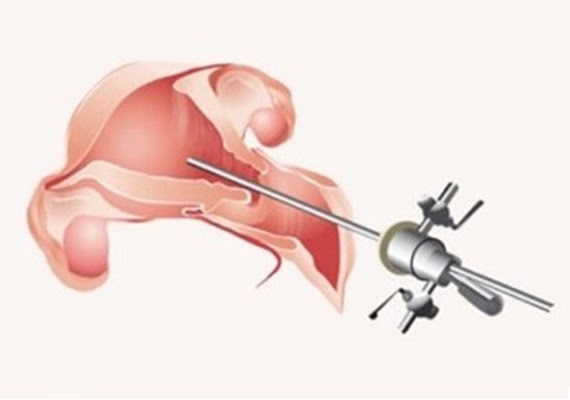Hysteroscopic septoplasty
Hysteroscopic septoplasty is an effective procedure to treat uterine septum . After septoplasty, women with septate uterus and a history of infertility or recurrent pregnancy loss can obtain a pregnancy rate of 80%.
What exactly is a uterine septum?
A uterine septum is a disorder in which the uterus has a wedge of excess tissue hanging from the top termed the septum. This septum can be short or long, extending from the top of the uterus to the cervix and functionally dividing the uterus into two compartments.

How does a uterine septum lead to infertility?
The septum’s additional tissue is distinct from that of the rest of the uterus. It has weak blood circulation. This means that embryos that land on the septum after fertilisation will either fail to implant in the uterus or, if they do implant, will fail to develop. As a result, the uterine septum can be a cause of infertility or recurrent pregnancy loss.
What is the cause of a uterine septum?
Uterine septums are present at birth in some women. When two tiny uteri fuse into one, as is normal, but fail to absorb the dividing internal wall, a congenital abnormality arises. While a woman is a foetus in her own mother’s uterus, her uterus develops, including any anomalies. Aside from the possibility of infertility, a woman with a uterine septum will have no additional symptoms.
Hysteroscopic septoplasty Procedure
Hysteroscopy is a small surgical operation that uses a narrow fiber optic tube, or hysteroscope, to look within the uterus (endometrial cavity). Hysteroscopy enables doctors to diagnose and treat uterine problems that can lead to infertility, recurrent miscarriages, irregular bleeding, and pain. Hysteroscopy is an outpatient operation that can be performed in a hospital operating room, a surgical centre, or a doctor’s hospital.
You will be given a hospital gown and instructed to empty your bladder before the surgery. You will be given sedative medication to help you relax, followed by local or general anaesthesia, depending on the type of hysteroscopy (diagnostic or surgical) that is planned for you.The hysteroscopy is carried out with you lying on your back and your feet supported by footrests.
A speculum will be put into your vagina to allow your doctor to examine the cervix. After cleaning the vagina with an antiseptic solution, the hysteroscope is softly inserted via the cervix and progressed into the uterus. To assist your doctor see the uterine cavity clearly, a liquid will be administered through the hysteroscope into your uterus. On a screen, a high-definition camera attached to the hysteroscope will project a view of the uterine cavity. Your doctor will be able to determine whether or not there is an abnormality in the uterine cavity. Unless extra treatments are scheduled to remove fibroids, polyps, uterine adhesions, or unblock your tubes, the hysteroscopy takes only 10-15 minutes to perform.
Benefits of Hysteroscopic septoplasty
Consider the following advantages while deciding whether or not to have surgical treatment for a uterine septum:
The procedure is relatively painless, and the recovery period is short.
Uterine septum surgery that is successful opens the top of the uterus, restoring normal shape and function.
